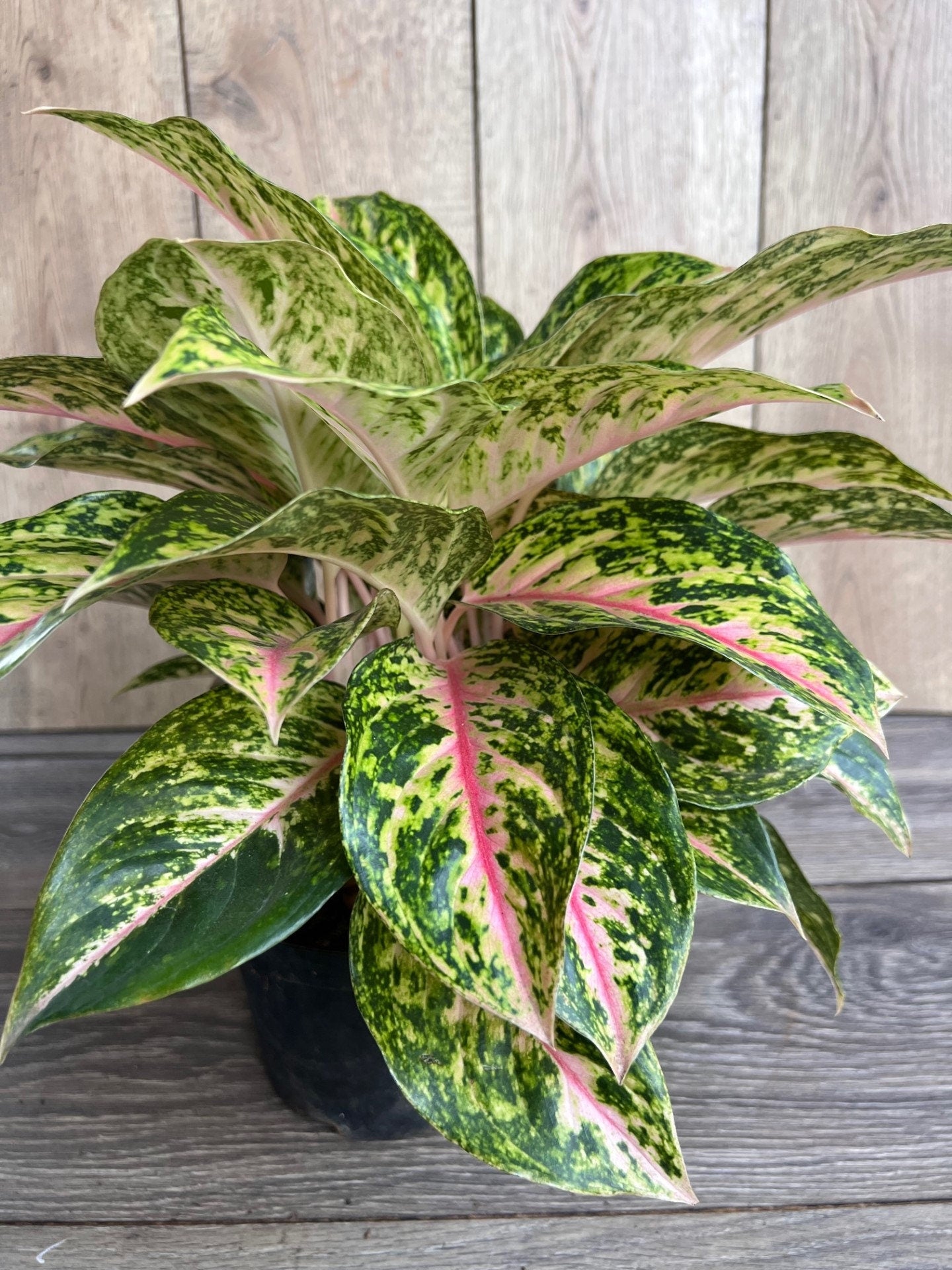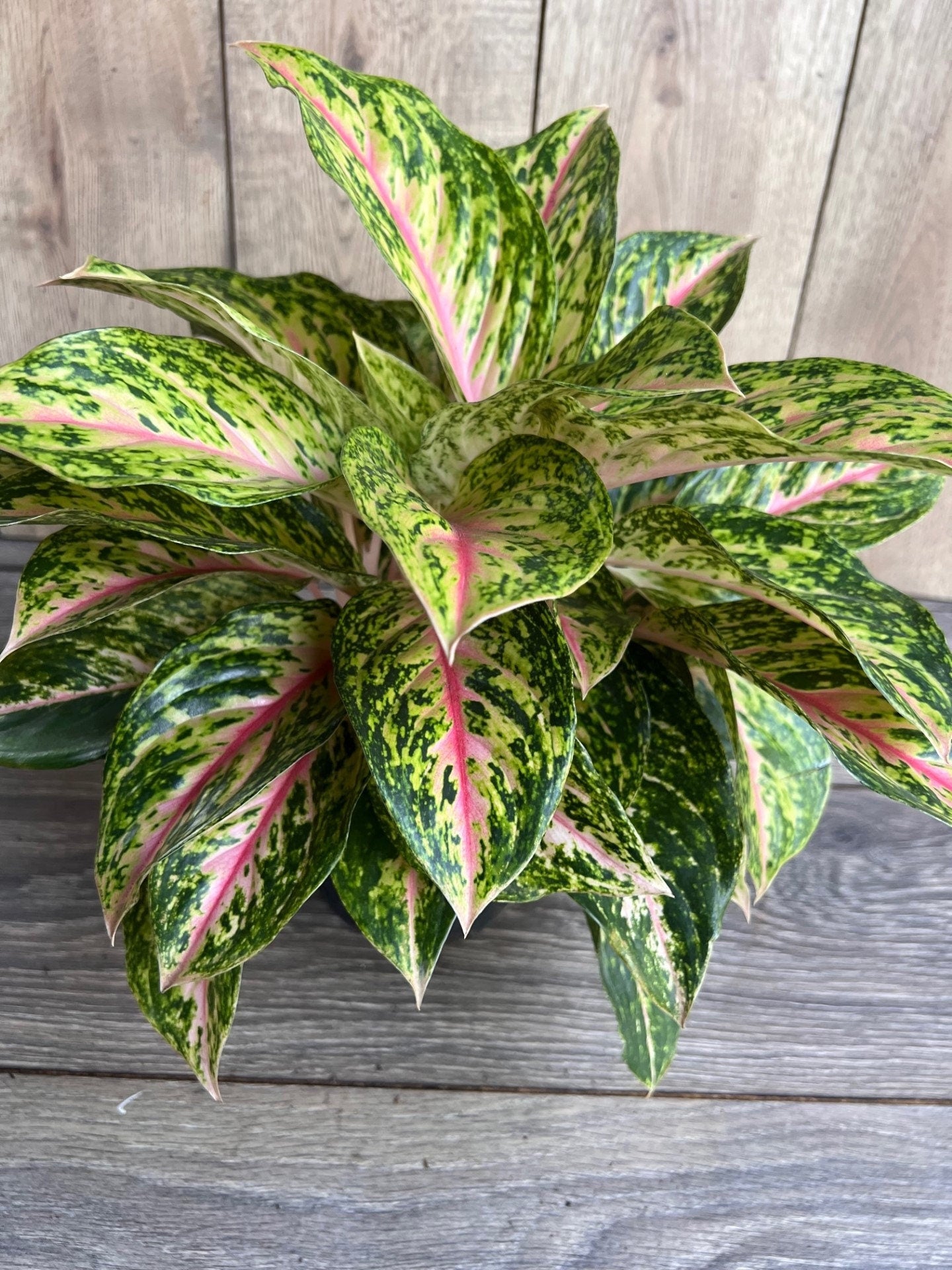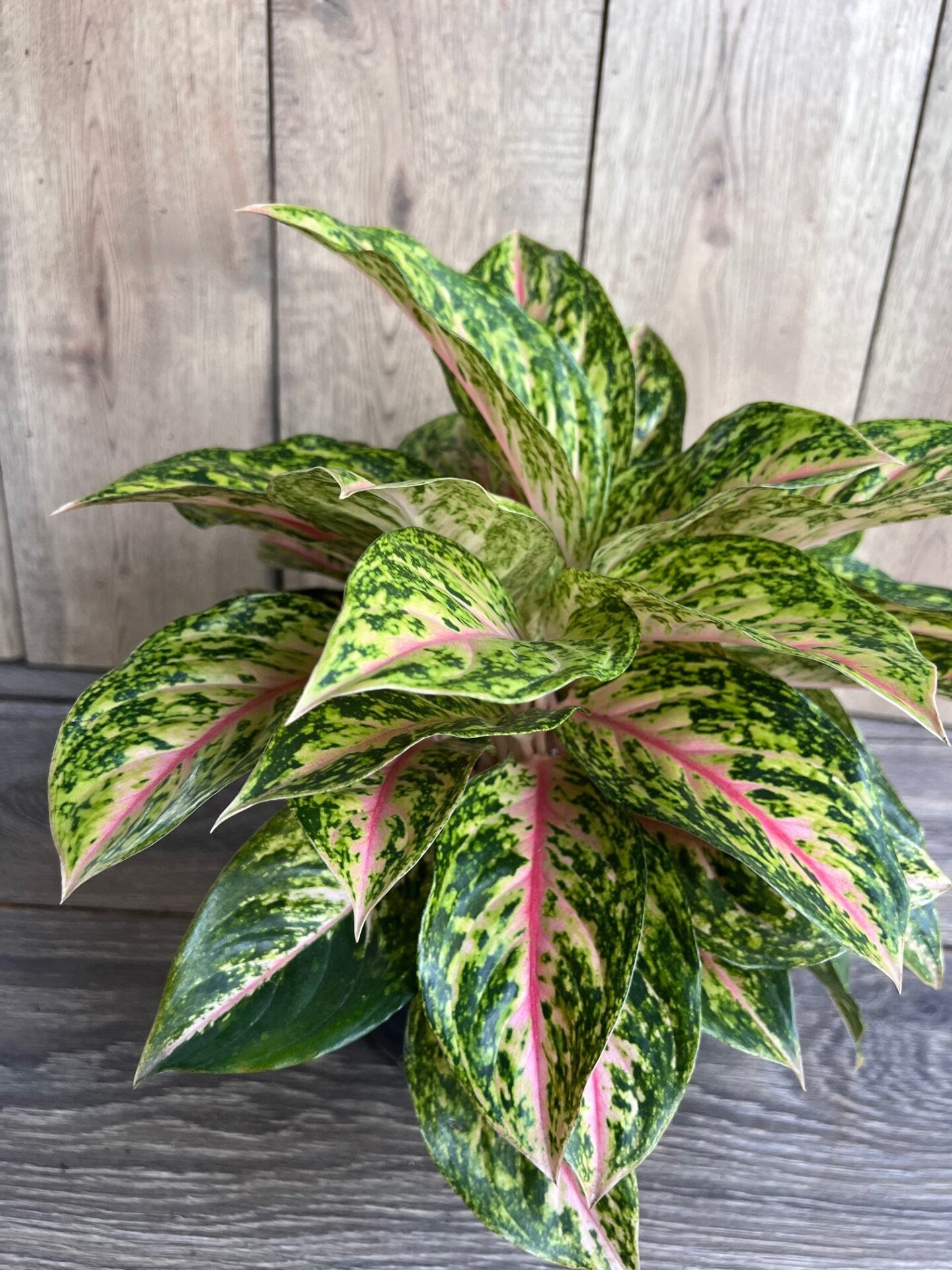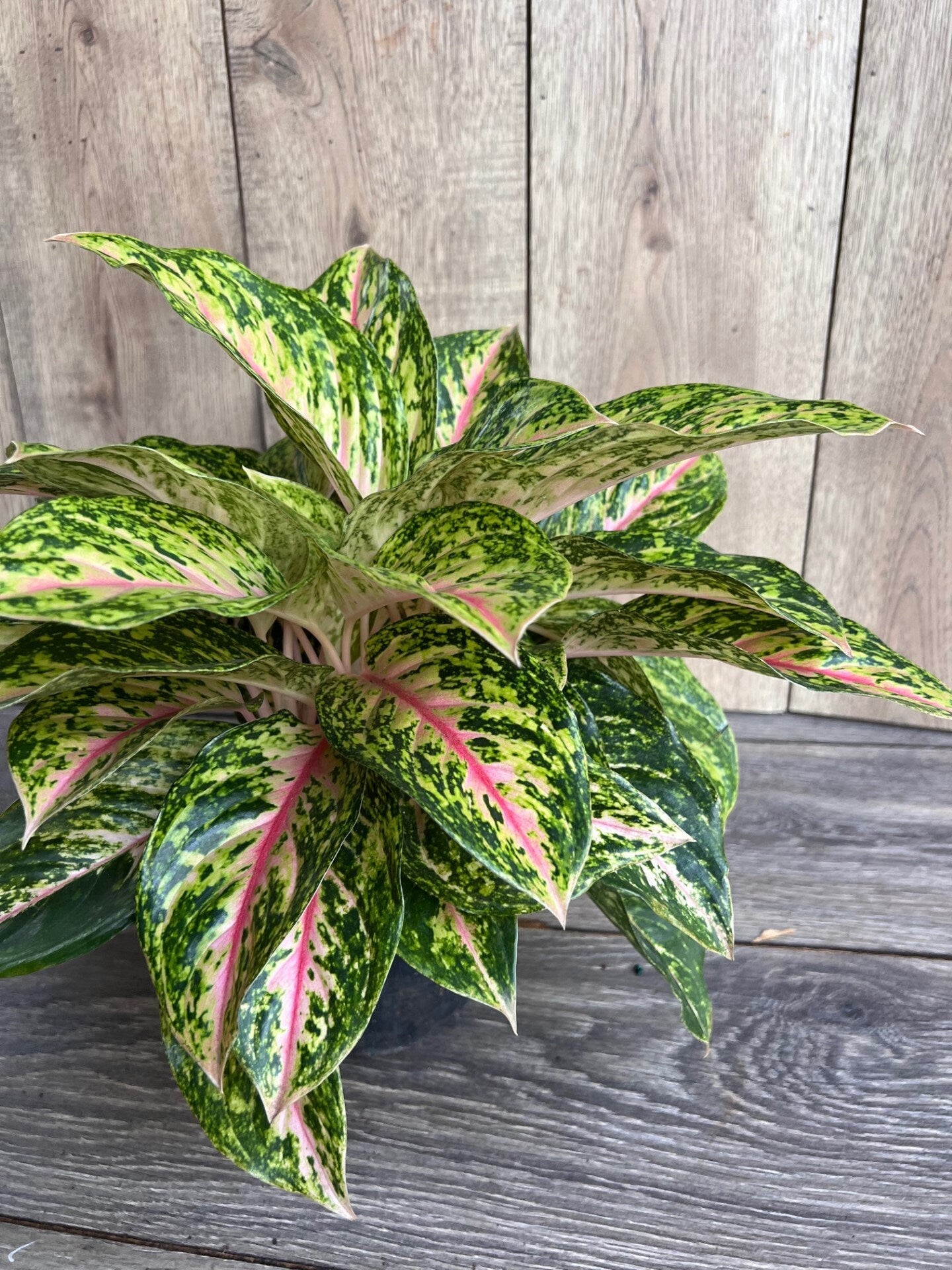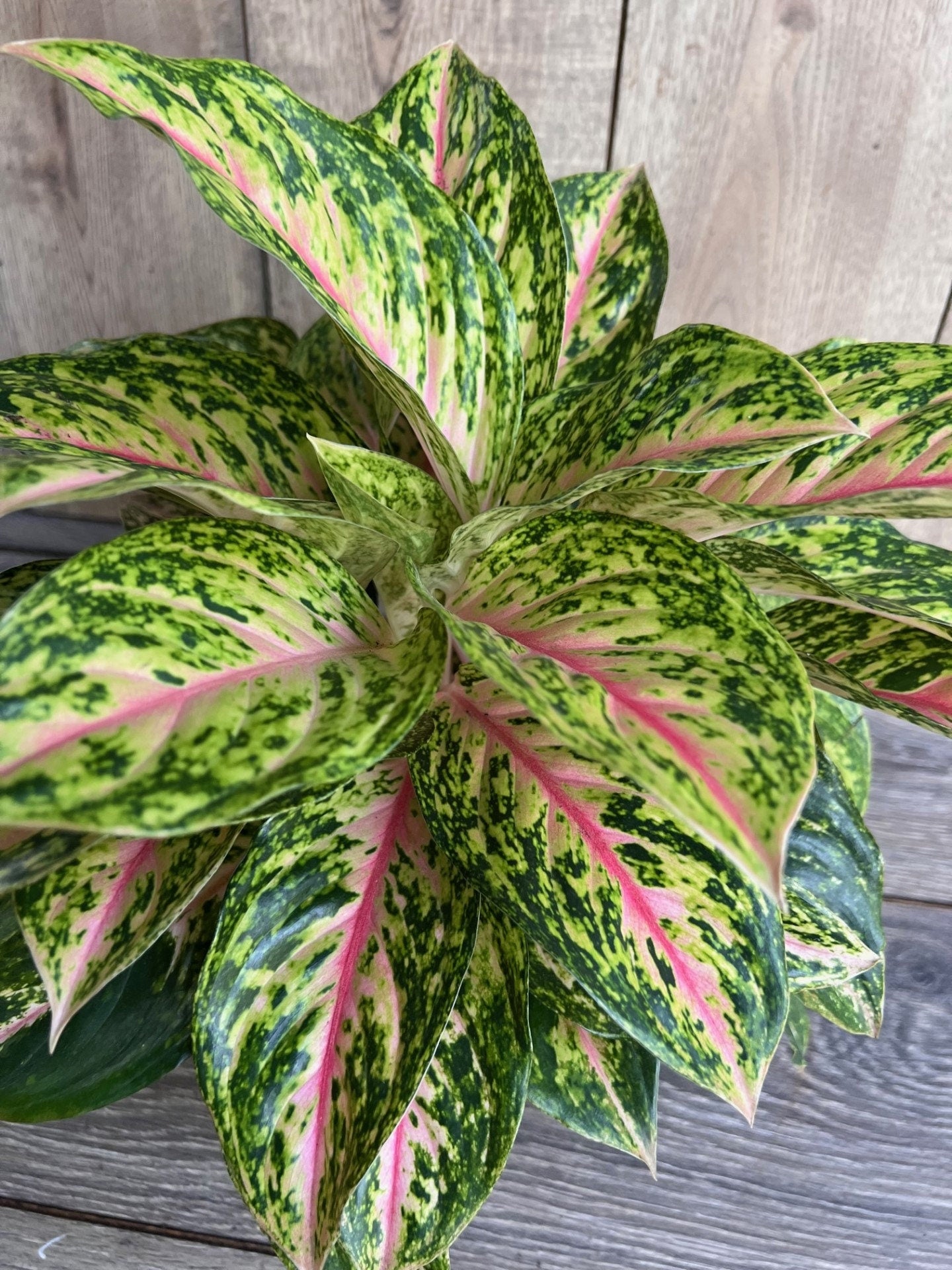Aglaonema 'Two Tone Moonstone', Pink Aglaonema, Chinese Evergreen, Arum Plant, Live House Plant, in 6" Pot
Aglaonema 'Two Tone Moonstone', Pink Aglaonema, Chinese Evergreen, Arum Plant, Live House Plant, in 6" Pot
Couldn't load pickup availability
Note; You will receive Aglaonema Moonstone in 6" Pot similar to the pictures
Aglaonema 'Moonstone' is a striking variety of Aglaonema known for its beautiful, silvery-white foliage that features soft green veins and subtle pinkish hues. The leaves have a glossy, almost metallic appearance, making them stand out in any indoor space. This cultivar is prized for its ornamental value and is relatively low-maintenance, thriving in indirect light and with moderate watering. As a tropical plant, Moonstone is well-suited for interiors, where it can add an elegant, calming presence with its unique coloration and graceful form. It's also known for being tolerant of lower light conditions, making it an excellent choice for less sunny areas.
Care:
Light
- Ideal Light: Aglaonema 'Moonstone' thrives in medium to bright indirect light. It can tolerate lower light conditions but may grow more slowly and lose some of its vibrant coloring.
- Avoid: Direct sunlight, as it can scorch the leaves and lead to fading or brown spots.
2. Watering
- Watering Schedule: Water the plant when the top 1-2 inches of soil feel dry. It's important not to overwater, as Aglaonemas are sensitive to root rot.
- Watering Method: Water thoroughly, but ensure the pot has good drainage. Empty any excess water from the saucer to prevent the roots from sitting in water.
- Humidity: Aglaonemas prefer moderate to high humidity, so misting the leaves or using a humidity tray can help, especially in dry indoor environments.
3. Temperature
- Ideal Range: Aglaonema 'Moonstone' prefers temperatures between 65°F and 80°F (18°C - 27°C). Avoid placing it in areas that experience cold drafts or temperatures below 60°F (15°C), as it can cause stress to the plant.
4. Soil
- Best Soil Type: Use well-draining, lightweight potting mix. A standard indoor potting mix with some added perlite or sand for extra drainage is ideal.
- Repotting: Repot when the plant outgrows its current pot or if the soil becomes compacted. Typically, Aglaonemas are slow-growers, so repotting may not be necessary every year.
5. Fertilizing
- Fertilization Schedule: Feed your Aglaonema 'Moonstone' every 4-6 weeks during the growing season (spring and summer) with a balanced, water-soluble houseplant fertilizer diluted to half strength.
- Winter Care: Reduce or stop fertilizing in fall and winter, as the plant's growth slows down.
6. Pruning
- Cleaning: Wipe the leaves occasionally with a damp cloth to remove dust and keep them shiny. This also helps prevent pests from hiding on the leaves.
- Cutting Back: If the plant becomes too leggy or if you want to control its shape, prune any unwanted stems back. You can also cut off any yellowing or damaged leaves.
7. Pests and Problems
- Common Pests: Watch out for common houseplant pests like spider mites, aphids, and mealybugs. If you see small, discolored spots or webbing, check your plant closely and treat with insecticidal soap or neem oil.
- Yellowing Leaves: Yellow leaves can indicate overwatering or inconsistent watering, especially if the soil stays too wet. Ensure proper drainage and check your watering habits.
8. Toxicity
- Note: Aglaonema is toxic to pets (cats and dogs) if ingested. Keep it out of reach of pets and children.
With the right care, Aglaonema 'Moonstone' can make a beautiful, low-maintenance addition to your indoor plant collection. Happy gardening!
Share
